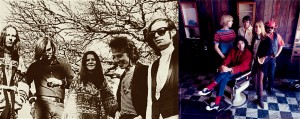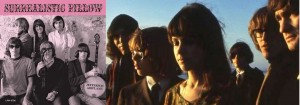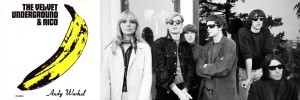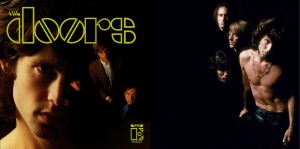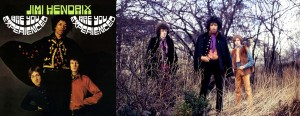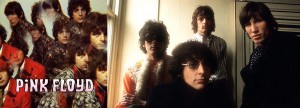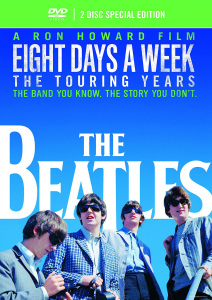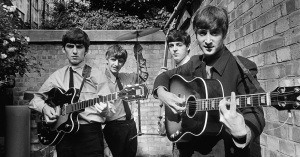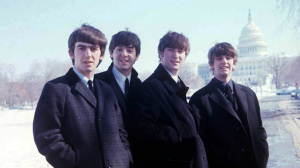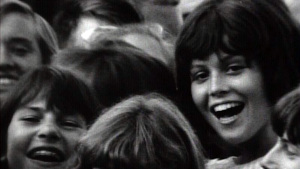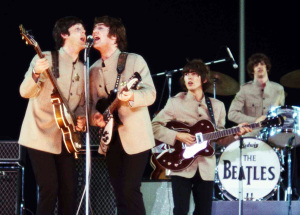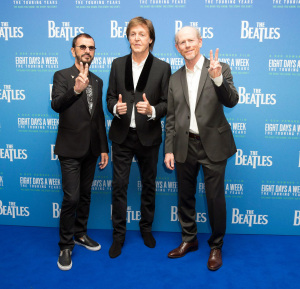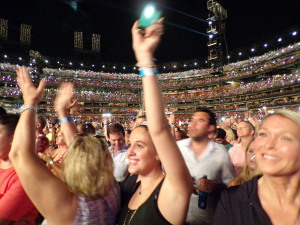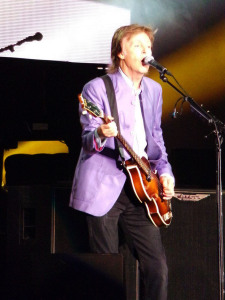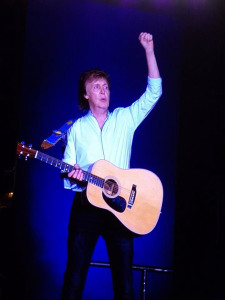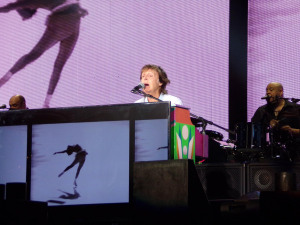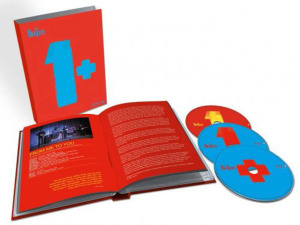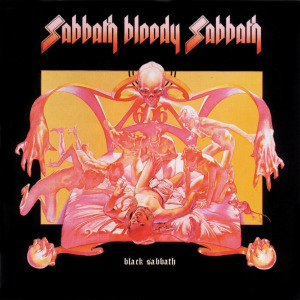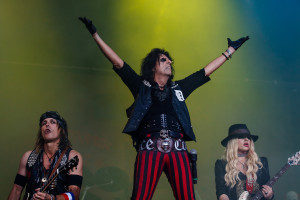(DISNEY PICTURES/APPLE CORPS LTD/WINGNUT FILMS (468 minutes; Rated PG-13); 2021)

You can’t really argue that GET BACK, the new three-part documentary directed by Peter Jackson about a pivotal month in the life of the Beatles during their last year together, isn’t THE cultural media event of Fall 2021. It’s been talked about for months, Paul McCartney himself did an NPR interview in which he discussed it, and it aroused the emotions of Beatle fans everywhere when the pandemic caused the project to morph from an intended theatrical film to a much longer documentary to be streamed exclusively on Disney+, the company’s streaming service, for three nights over the Thanksgiving holiday. Speculation in advance was intense, as one contingent of fans feared it would “whitewash” the long-discussed tensions of the Fab Four in their final days (which the previous LET IT BE documentary certainly left one with knowledge of), and another contingent waited for validation of long held beliefs: that Yoko broke up the Beatles, that Paul was a dictatorial tyrant in those last days, that George Harrison had simply had enough and stormed out in anger, and that the lads were simply incapable of working together creatively anymore after the many pressures of being the most successful and influential rock band in history.
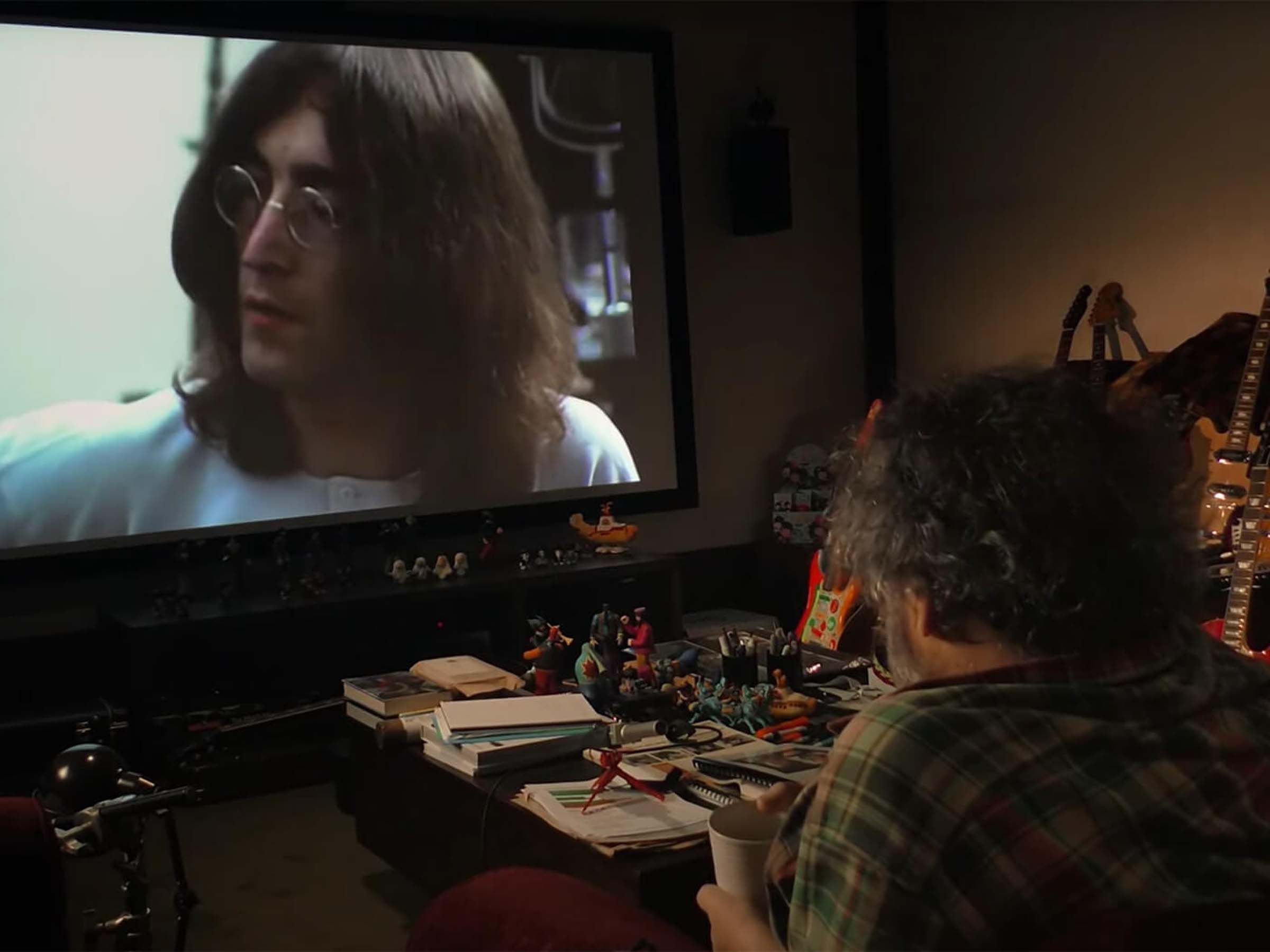
Well, then. New Zealand’s legendary director Jackson, never having been shy about tackling enormous, “impossible” projects (remember that LORD OF THE RINGS thing?) has a mega documentary for YOU! And guess what? You can put everything you thought you knew about the Beatles’ final days aside, and marvel at the intimate scope and cumulative effect of this roughly eight-hour saga and the many revelations it contains. First, some clarity: This is not really a film about the “final days” of the Fabs. What we have here is a cinema diary of just over three weeks from January 1969, when the band was working on a planned project that became LET IT BE, intended to be a film, album and concert that would capture their intention to “get back” to a more youthful, spontaneous atmosphere that’d harken back to… well, when they were more youthful and spontaneous. A look at the ACTUAL last days of the Beatles would focus on the ABBEY ROAD recording, the massive tensions created by Allen Klein being hired to manage their financial affairs (a pivotal decision supported by all but McCartney, who fought it tooth and nail and had to sue the other three to put an end to Klein’s shady practices), and John Lennon’s increasing desire to be with Yoko and do his own thing instead of being wrapped up in the monstrous machine that was THE BEATLES. You see all the seeds of this stuff in Jackson’s doc: Klein is introduced in the latter half of it, Yoko is seen at John’s side throughout most of the footage, and songs that later appeared on ABBEY ROAD are indeed rehearsed and talked about in many segments. But no, this is NOT an investigation of what broke up the Beatles. Jackson was given access to 60+ hours of unseen video and roughly 150 hours of unheard audio, and from this massive trove, he culled together a day-by-day record of what John, Paul, George and Ringo were doing during those fabled days first at Twickenham Studio (where they were under pressure to get stuff done before the movie THE MAGIC CHRISTIAN was to take over the place, starring Ringo and Peter Sellers), and later at #3 Saville Row, home to the Beatles’ own Apple Records label. The band had a reasonably interesting project in mind; you can’t fault their intentions, and all seemed eager to dive in and work after a fairly long break following the White Album. But things did NOT go smoothly, and we see quite clearly that they were in over their heads, unable to figure out WHERE to stage a live performance, WHICH songs to record and HOW to carry on efficiently without a “daddy figure” (as McCartney refers to Brian Epstein, who’d previously sheltered the boys to some extent from the worst tensions brought on by fame and industry pressures). Jackson had an absolutely daunting task here: All this footage has been buried in a vault for half a century, and the Beatles clearly had NO taste for delving into a pile o’ stuff that would, rumor had it, show them in their worst moments, unable to cooperate with each other long enough to simply record a new album and go on about the business of being the world’s biggest band.
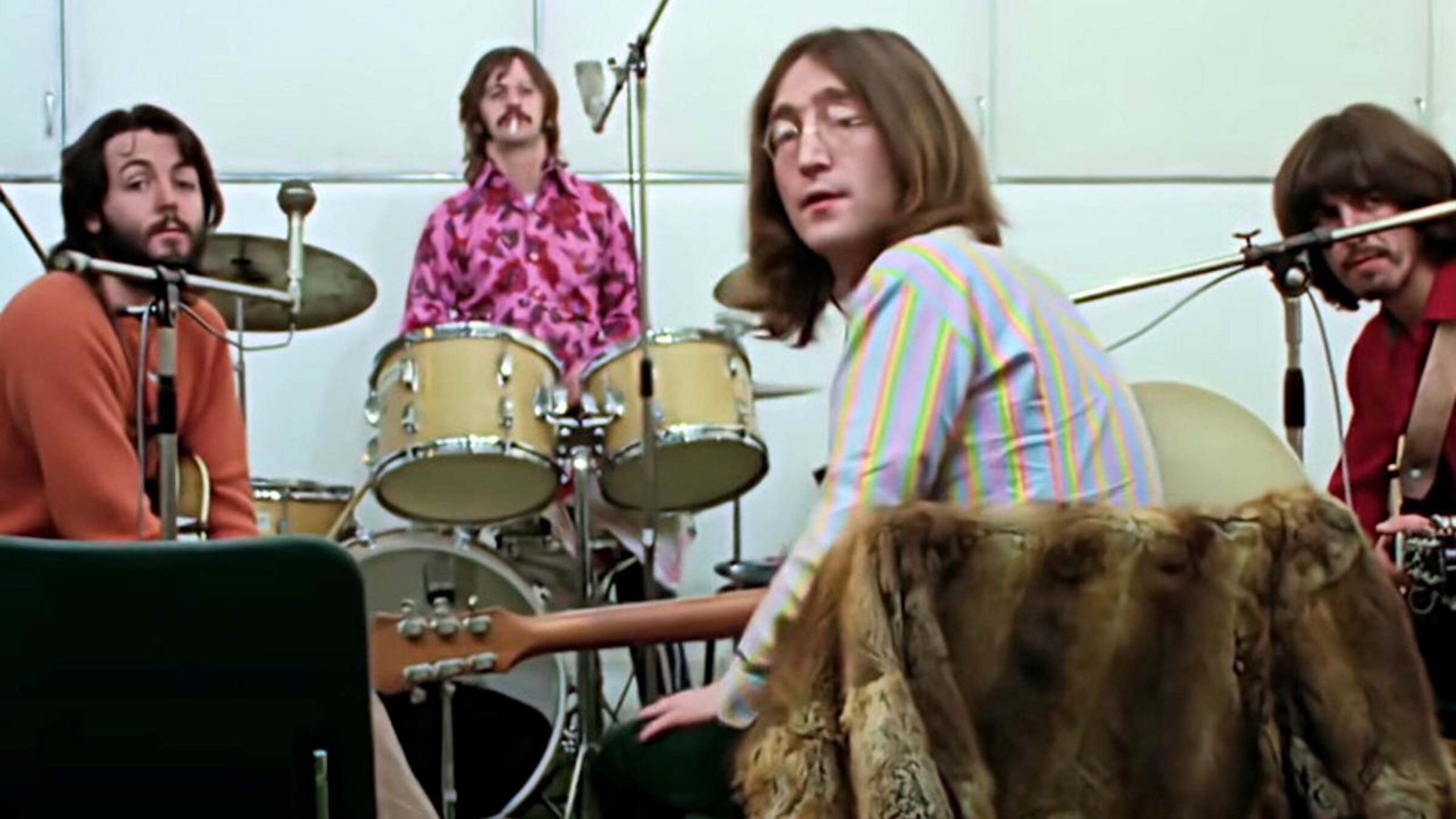
Except, that is not what happened. The story was WAY more complex than that, and not nearly so bleak. This amazing documentary allows us to travel back in time and be “flies on the wall” at the daily recording sessions, where the four lads discuss various songs and impulses, jam spontaneously, and gradually shape the compositions that would eventually become the songs most of us know like the back of our hands by now. Repeated segments showing the evolution of songs such as “Get Back,” “Don’t Let Me Down” and “Two of Us” are fascinating, and from a songwriting point of view, the insight into the process is invaluable. You may get sick of some of the repetition, but I’m pretty sure most committed Beatles fans won’t mind at all. To see how “Get Back” evolved from being a “protest song” about immigrants to a more aesthetically vague pop/rock tune that the boys agreed should be the next single, is captivating. And “Two of Us” has layers of resonance about the close relationship between Paul and John, both in the actual lyrics of the song (“You and I have memories/Longer than the road that stretches/Out ahead… “) and in the discussions we are privy to about the arrangement, in terms of whether it should be a simple acoustic song or something more sonically dense, with many scenes showing the two most famous songwriters working closely together to try to get it right. They ALL want to do that, and these things take TIME. Plain and simple. We see them getting impatient, making fun of themselves, and trying various things over and over. It could and does get tedious at times. The infamous exchange between Paul and George where the latter mutters that he’ll “play anything you want, or I won’t play at all if it will please you… ” that was a focal point in LET IT BE, occurs here with much greater context, that primarily being that Paul was trying to be the taskmaster and keep the group focused, not only on specific arrangements but on getting things DONE in a timely manner. With the full backdrop of the proceedings on display here, it’s pretty reasonable, and George’s impatience is understandable, not because McCartney was a jerk, but because “it’s all too much” at times. Plain and simple.

George, of course, does walk out for a while; every essay about this documentary has talked about that. In 1969, Harrison was truly coming into his own as a songwriter, and there are two pivotal scenes that deal with this. A remarkable private conversation between Paul and John is captured on audio. John declares, “It’s like George said, he didn’t get enough satisfaction anymore because of the compromise he had to make to be together… it’s a festering wound that we’ve allowed to… and yesterday we allowed it to go even deeper, and we didn’t give him any bandages.” Paul is listening, clearly, and responds: “Yeah, we treat him a bit like that. See, because he knows what we’re on about. But I do think that he’s right. That’s why I think we’ve got the problem now, the four of us. You go one way, George one way, and me another… “
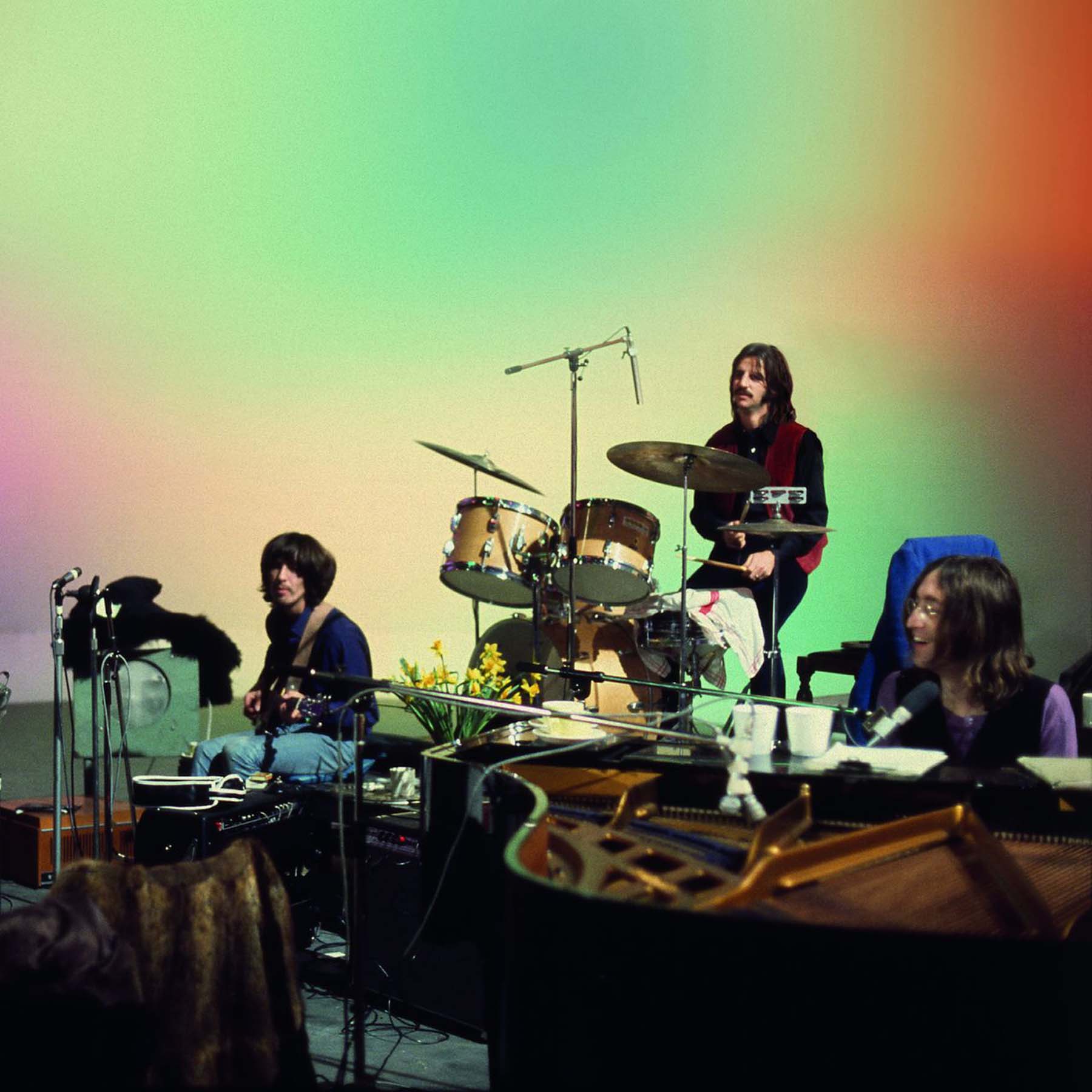
The revelatory conversation continues with John openly stating he’s intimidated at times by Paul’s insistence on certain arrangements, and how he’s sometimes given up speaking out in favor of his own thing. He admits that “sometimes you’re right” to Paul, but that other times he has disagreed with the final results. In the context of all we know about the Beatles, this is just groundbreaking, to have this inside look at a tension-packed time. Meanwhile, we’re all aware of what was coming next for George Harrison. He was writing tons of new songs, including numbers like “All Things Must Pass,” “Isn’t It a Pity” and a little tune called “Something.” A much talked-about scene shows George struggling with the line to follow “Something in the way she moves/Attracts me like… ” Lennon comically suggests singing anything at all until a good fit is found. “Attracts me like a cauliflower,” he suggests, and a different scene shows George singing “attracts me like a pomegranate.” This is all pretty amusing, but when you step back for a moment and realize you’re seeing one of the greatest songs ever written in its infancy, a song that was obviously one of the highlights of the Beatles’ soon-to-be final studio album, ABBEY ROAD, you can’t help but be totally caught up in George’s place in music history right here. There’s a separate conversation between John and George where the latter tells John he’s written about “20 new songs” and that it would take ten more Beatle albums to get them all out there at the current rate of “two George songs per album.” George suggests he may just have to do a solo album, something which at first surprises John, and then seems to turn a light bulb on in his head. We all know what actually happened, and it’s simply another revelatory moment. So is seeing George being the pragmatic one through most of this documentary. While the others are brainstorming ludicrous ideas like doing a performance at an ancient historical site in Libya, or taking a selected group of fans on a large ship across the ocean to be the audience for whatever they’re gonna do, George wryly declares “We can’t even get Fender to send us a free amp.” This documentary will almost certainly increase your respect for George Harrison and his importance to the Beatles…
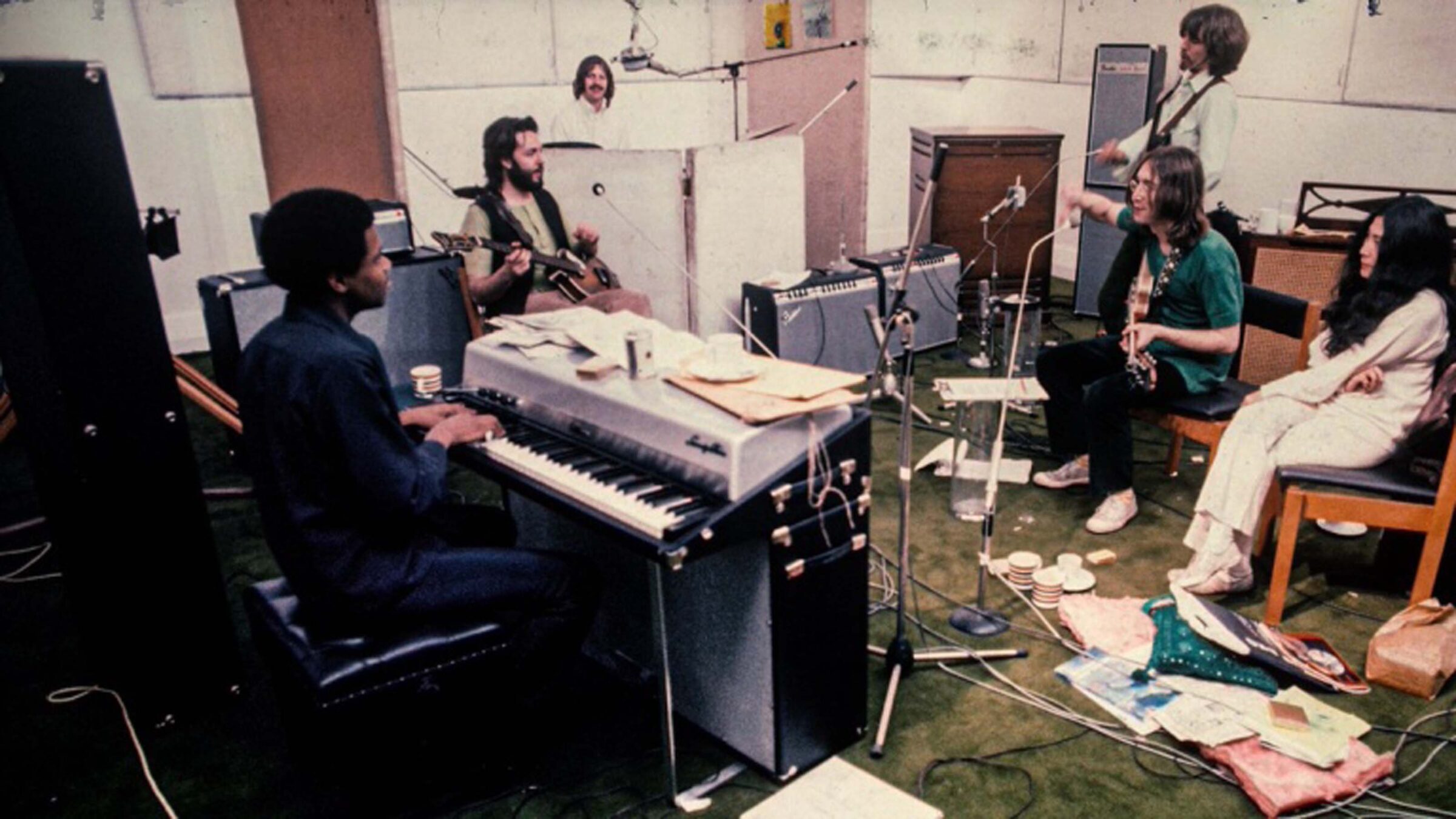
Does the film show Paul McCartney as a raging egomaniac? No, because they ALL clearly were. Remember, they were already the most famous group in the world with endless expectations heaped upon them everywhere. We get to see various members reading their own press at the time, richly entertaining, including George reading a bit about him and John coming to physical blows, an event that did NOT actually happen. Paul is definitely shown paying the most attention to specific song arrangements, and the reality of trying to meet their deadlines, but he is about collaboration all the way. It’s amazing to see him and John working together closely; you really WANT them to figure everything out and keep making remarkable music. Songs that never became official Beatle songs are given bits of time, such as McCartney’s “Teddy Boy” and “Another Day” and Lennon’s “Gimme Some Truth” and “Child of Nature,” which would in a couple of years morph into “Jealous Guy.” And wow, is there some fun seeing early versions of ABBEY ROAD tracks like “Maxwell’s Silver Hammer” (showing Beatles road manager Mal Evans banging a device gleefully), “She Came in Through the Bathroom Window,” and “Polythene Pam” enter the picture. Everything is a question mark in this film: WHAT songs will they record? WHAT songs will they play for whatever live concert they are going to do? How can they possibly deliver when they feel they only have maybe half a dozen songs with fully developed arrangements?

But what is NOT yet truly a question: Are the Beatles going to break up? NO, that is not yet obvious. There are no “fights” in the conventional sense here; the lads are having a good time, they clown around, they crack jokes. It’s surprising in particular to see how good-humored Lennon is most of the time. He’s happy to have Yoko around (SHE, by the way, is almost continually a gentle presence, never intrusive, and even defended by Paul in a couple of scenes (“they just wanna be together, you know… “). With remarkable foresight, Paul declares in one scene, “Wouldn’t it be funny if in 50 years people say, ‘Oh, Yoko broke up the Beatles because she sat on an amplifier?'” So there’s plenty of myth smashing in GET BACK. When this footage was being shot by original LET IT BE director Michael Lindsay-Hogg (looking more youthful than you’d think and probably a bit in over his head), there were still several possible futures for the Beatles. That is crucial, because this film is NOT a breakup film. It’s about ambition, mega fame, the ups and downs of collaboration, artistic egos stretched to the limit, and problem solving on a grand scale. Watch the happy look on John Lennon’s face when keyboardist Billy Preston enters the scene and shows effortlessly that he can spruce up the arrangements on some of these new songs. “You’re IN the band!” Lennon tells him. Watch a fetching Linda Eastman and her energetic young daughter Heather, respectively, holding hands with Paul and taking photos (Linda and Paul were two months away from their fabled wedding at the time of this footage) and dancing around the studio gleefully, exuberant as a young girl could be. And watch, for the first time, the legendary “rooftop concert” in its entirety, the Beatles’ final live appearance, which of course was filmed on top of Savile Row, to the delight of some on the street below and the consternation of many others, including the British bobbies, who amusingly try to shut things down because of complaints. People on the street are interviewed and shown in effective cross cuts as the Beatles play, reflecting a reasonable cross section of opinions. This is music history, folks. But it’s told in a fresh, fascinating manner that changes what we thought we knew about the Beatles. And Peter Jackson wisely avoids any present-day interviews… he stated his desire to avoid that sort of thing. Nope, this is time capsule stuff, our unique opportunity to experience what the Beatles were going through in January of 1969.

It’s amazing, honestly. What was to follow was the group throwing up their hands in despair at their inability to complete the planned album (in a still controversial move, the whole thing was handed over to Phil Spector, resulting in an album that almost no one would be completely happy with), a stunning decision to record a brand-new studio album that would give George Martin one more chance to fully produce the band, George Harrison a chance to show he’d finally equalled the others in songwriting prowess, and give McCartney a chance to spearhead perhaps the greatest medley ever featured on a rock album; a furious legal battle over Allen Klein and the failure of the other three Beatles to stop McCartney from releasing his debut solo album BEFORE the release of LET IT BE (the accompanying press at the time appeared to show McCartney “officially” announcing the end of the Beatles, even though that isn’t quite accurate), a disbelieving fan kingdom unwilling to believe it was “the end,” and of course, lots and lots of nasty comments and bad feelings. But that was what would FOLLOW the events in GET BACK. It is NOT what we see on screen, which is in fact an energetic, lively, mostly upbeat look at an intense collaborative period by four of the most famous musicians in history and their handlers, all trying to respond to the immense pressure of gargantuan fame. GET BACK really is a treat, if sometimes a patience-testing experience, that will be richly rewarding for dedicated Beatles fans. You won’t forget it if you watch it with focus and attention. There are scenes that are simply stunning in what they tell us, all these years later. And it’s invaluable as a detailed look at the creative process itself. Sure, it’s a pain to have to find a way to get Disney+ in order to watch this thing. But do it. Really. There has never been a documentary as insightful and surprising, in musical terms, as THE BEATLES: GET BACK. We owe Peter Jackson a debt of gratitude for pulling this off, and let’s be happy for Paul, Ringo and the wives of John and George, for seeing a critical record set straight at last.
UPDATE: Since this review was written, a DVD of the film was scheduled for release in February 2022. Apparently, a few copies managed to make it into the hands of some lucky fans, though once Amazon’s stock was depleted, the Disney Company pulled the package from its schedule and in April announced that the title has been delayed indefinitely due to “authoring challenges.” It now appears that the DVD and Blu-Ray editions will be released, at least in the UK, on July 26. The three-part docuseries is still streaming at Disney+.









